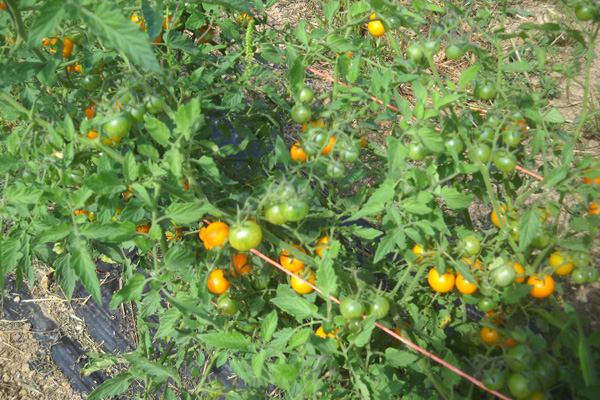-

Erin Donahue -

Christina Barkanic -

Brittany Trott -

Emily Wiley -

Jessica Reilley -

Chris Raines -

Will Nichols -

Emily Reddy -

Michele Marchetti -

Michele Frank -

James Gherardi -

Kit Henshaw -

Christina and Erin -

Kim Tait -

Erin McKinney -

Steve Spanelli -

Sam Komlenic -

Katherine Taylor Grofic -

James Eisenstein -

Jamie Oberdick -

Anna Lombardo -

LacCreta Holland -

Tony Ricci -

Local Food Journey -

Laura Young -

Kristin Camplese -

Harrison's Fresh + Local -

Danielle Matalonis -

Kristine A. -

Linda Weaver -

Naomi Elle Schwartz -

Dana Stuchul -

Cara McShane -

Brittany Smith -

Jessica Illuzzi - Frosty
-

Jessica Paholsky -

James Sechrengost -

Brad Yeckley -

Maya Althouse -

Jordan Reabold -

Kim Chase -

Maria Bryant - Alexandrea Scott
Harvesting Tomatoes
Posted by James Eisenstein on 09/04, 2012 at 02:29 PM

The fruit of tomato picking labors revealed. Photo Credit James Eisenstein.
I’ll wager that when most folks buy green beans, radishes, tomatoes, or nearly any other vegetable, they don’t think much about how they were harvested. Gardeners, of course, know better, but even they can forget that almost every vegetable is harvested by hand, usually one at a time.
These thoughts came to mind late last month as I spent a couple of hours in Field 7B at Jade Family Farm where we have several long rows of tomatoes.
Most vegetables must be harvested with care, but some require especially gentle handling. You’d be surprised how easy it is to mar a zucchini with a fingernail.
Tomatoes are nearly as delicate and cannot just be cut and tossed into a bucket. You need to search the plant to find them, judge whether they are ripe or not, pick those that are ripe, inspect each to make sure it is not cracked or deformed, and gently place it in a container. Cherry tomatoes can be removed easily from the plant, but full-sized ones usually need to be clipped off.

Sun Sugar cherry tomatoes on the vine. Photo Credit James Eisenstein.
There are subtle differences in harvest techniques depending on the variety. Heirlooms are especially delicate, and surprisingly frustrating. They tend to split, crack, and display other imperfections that render them unacceptable to customers who don’t know better. Alas, most people do not know that a crack or bad spot on a big, ripe, nutritious, delicious heirloom tomato can easily be removed with a knife.
So harvesting heirlooms requires putting many (sometimes half, sometimes eighty percent or more) in the seconds basket. We had so many heirloom seconds that we have, by and large, stopped growing them. If you see someone selling an heirloom tomato, buy it fast!
Cherry tomatoes sometimes grow close together, making harvesting relatively fast. But some are buried deep inside the plant, and require some contortions of arm and hand to get at them. This year we are growing an odd-shaped red cherry called Juliet that is relatively firm, easy to pick, and absolutely delicious. Unfortunately, their unusual shape scares many customers off. We’ve found customers eventually catch on and begin to purchase unfamiliar varieties.
It is satisfying going down the row, filling quarts with tomatoes, and feasting on the seconds. Some are borderline ripe, requiring a quick decision. My technique is to pick and eat it.
As you enjoy your tomatoes or beans or peppers, consider what it took to harvest them.
![]() Author: James Eisenstein
Author: James Eisenstein
Bio: Unpaid Field Hand at Jade Family Farm | Former Penn State Professor
- Our Local Food Journey comes to an end
- Winter isn’t a quiet time at the farm
- Get the taste of garden season right now by growing herbs indoors
- All you need to know about PASA’s Farming for the Future conference









NO COMMENTS